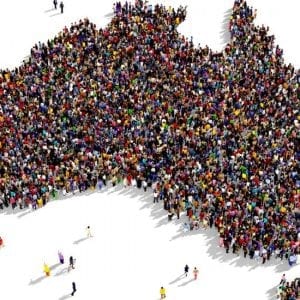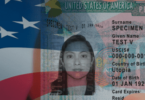Definition of the African Diaspora.
The African Union (2011, p.3) defined “the African Diaspora as consisting of peoples of African origin living outside the continent, irrespective of their citizenship and nationality and who are willing to contribute to the development of the continent and the building of the African Union.” This definition is very broad, and actually reflects an important reality that is very often overlooked—the African Diaspora is a heterogeneous group. The African Diaspora is made up of disparate communities of peoples that identify themselves based on national, ethnic, cultural, and religious affiliations. The African Diaspora is a quintessential portrayal of a continent that is home to 55 countries, over a billion people, and as many as 2,000 languages (Copeland-Carson & Okome, 2013). Understanding the intricacies within the African Diaspora will help prevent failures resulting from uniformed attempts to deal with this group as a homogeneous ensemble.
The U.S.-based African Diaspora.
The number of African immigrants living in the U.S. has grown steadily from 80,000 in 1970 to 1.6 million in 2012 (Gambino, Trevelyan, & Fitzwater, 2014). African immigrants represented 4% of the 39.8 million immigrants on U.S. soil in 2012. The vast majority of African immigrants—nearly 75%—arrived after 1990. Wars, human rights abuses, and economic woes in countries of origin; new restrictions in immigration policies in Western Europe; and the adoption of more favorable immigration laws in the U.S. are some of the reasons beyond the rapid growth of the African immigrant population. African immigrants are among the fastest growing groups of U.S foreign born population.
Distribution by Country of Origin
They came predominantly from Western Africa (36%), Eastern Africa (29%), and Northern Africa (17%). The vast majority of African immigrants are originally from Nigeria, Ghana, Ethiopia, Kenya, Somalia, Egypt, and South Africa. 41% of all African immigrants have come from four countries—Nigeria (221,000 or 14%), Ethiopia (164,000 or 10%), Egypt (143,000 or 9%), and Ghana (121,000 or 8%).
Distribution by State of Residence
Four states are home to 36% of African immigrants—New York (164,000), California (155,000), Texas (134,000), and Maryland (120,000). Rhode Island, Massachusetts, Minnesota, Nevada, and Virginia are also among the top states where large numbers of African immigrants reside.
Language Diversity
Sub-Saharan immigrants were more likely to be proficient in English and speak English at home than the overall U.S. foreign-born population, largely because a majority came from countries where English is an official language. In 2015, 25 percent of sub-Saharan Africans spoke only English at home, versus 16 percent of all immigrants. Furthermore, 27 percent of these immigrants (ages 5 and over) reported limited English proficiency, compared to 49 percent of the overall foreign-born population.
Age, Education, and Employment
The sub-Saharan African population was slightly younger than the overall U.S. foreign-born population but older than the native born. In 2015, a higher share (83 percent) of sub-Saharan immigrants were of working age (18 to 64), compared to the overall foreign-born (80 percent) and U.S.-born (60 percent) populations.
African immigrants have achieved greater educational successes compared to immigrants from other regions. 41% of all African immigrants had obtained a bachelor’s degree or higher degrees in 2012, with immigrants from Egypt (64%) and Nigeria (61%) being the top achievers. The rate for all foreign born was 28%.
Unlike African immigrants who came to the U.S. as refugees from war-torn countries such as Somalia, those who moved to the U.S. for educational purposes or after winning the green card lottery (it requires a high school diploma) have generally reached higher levels of schooling. The former encounters more difficulties integrating into the American society and finding employment. Overall, African immigrants have high employment rates—70% are employed regardless of their country of origin (Capps, McCabe, & Fix, 2012). However, highly skilled African immigrants suffer considerably from underemployment despite their educational attainments (Capps, McCabe, & Fix, 2012; Zeleza, 2008). Discrimination in the labor market, racism, and a lack of familiarity with newly arrived African immigrants can explain their low income levels. Despite this, it is relatively well-documented that financial limitations have in no way prevented members of the African Diaspora from giving back to their home countries.
Impact of the US based African Diaspora on the Continent
Remittances can be broadly defined as funds that an expatriate sends back to their home country using various channels. Remittances are commonly understood as being foremost meant for use within the very close network of the person who sends the funds. This network usually encompasses family members and other relatives. The sheer magnitude of remittances to Africa implies that they constitute the premier expression of the African Diaspora’s financial giving. Available statistics indicate that the U.S.-based African Diaspora gave a whooping $11 billion to Africa in 2011 (Ratha et al., 2011). Globally, the total amount of remittances members of the African Diaspora sent to Sub-Saharan Africa was $40 billion in 2015 (World Bank, 2015). These figures do not take into account money sent through informal channels, which may be twice the official account of remittances (Rodima-Taylor, 2015).
Remittances surpass official assistance from wealthy countries. They represent a reliable and stable source of funding African countries can tap without the contractual constraints imposed by multilateral and bilateral donors.development
In recent years, the African Diaspora has become a coveted source of technical expertise and funding in and out Africa (Rodima-Taylor, 2015). A plethora of continental and country-specific initiatives have been undertaken in Africa, with the goal of fully integrating the African Diaspora in national and regional development enterprises. The first Global African Diaspora Summit held in South Africa in 2012 was commissioned by the African Union as part of its Diaspora Initiative.
At the micro level, governments in countries such as Kenya, Uganda, and Ethiopia have adopted policies and programs that harness the capabilities of their respective Diasporas (Ogachi 2015). Ogachi (2015) cautioned that the adoption of Diaspora friendly policies by African governments has not automatically translated into a genuine embrace of the Diaspora. Hindrances that include political barriers, human rights abuses, the lack of freedom of expression, and tensions between Diaspora members and counterpart back home prevent a more effective engagement from Diaspora communities.
Source: Funding Higher Education in Sub-Saharan Africa. I. Mounkala. 2016









